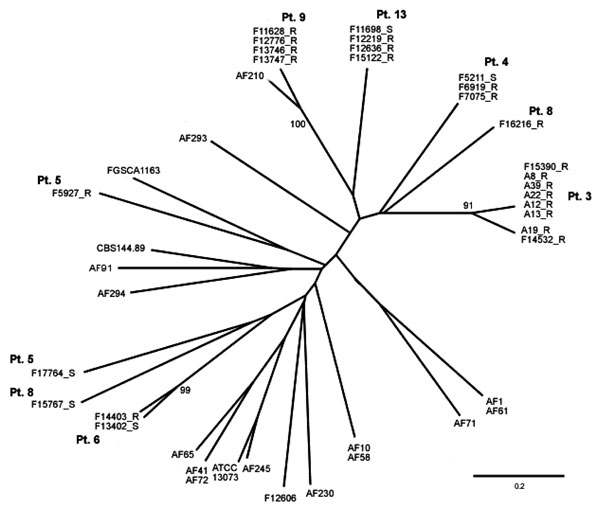Volume 15, Number 7—July 2009
Research
Frequency and Evolution of Azole Resistance in Aspergillus fumigatus Associated with Treatment Failure1
Figure 2

Figure 2. Unrooted phylogenetic tree showing the genetic relationship of isolates from 7 patients.The genetic relationship of these isolates is shown in relation to each other and to 18 other isolates. AF numbers belong to a collection of >200 isolates, held in Manchester, UK. ATCC, American Type Culture Collection; CBS, Centraalbureau voor Schimmelcultures; FGSC, Fungal Genetics Stock Center. Bootstrap values >90 only are shown. Scale bar indicates nucleotide substitutions per site.
1These data were presented in part at the 2nd Advances Against Aspergillosis meeting, February 22–26, 2006, Athens, Greece; and 46th Interscience Conference on Antimicrobial Agents and Chemotherapy, September 27–30, 2006, San Francisco, CA, USA.
Page created: November 09, 2010
Page updated: November 09, 2010
Page reviewed: November 09, 2010
The conclusions, findings, and opinions expressed by authors contributing to this journal do not necessarily reflect the official position of the U.S. Department of Health and Human Services, the Public Health Service, the Centers for Disease Control and Prevention, or the authors' affiliated institutions. Use of trade names is for identification only and does not imply endorsement by any of the groups named above.